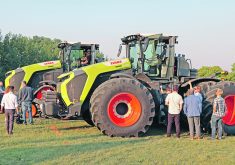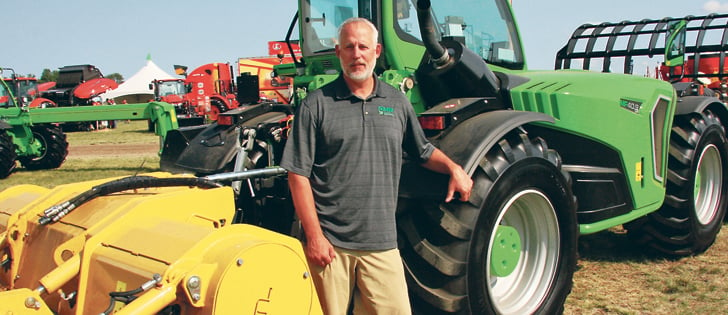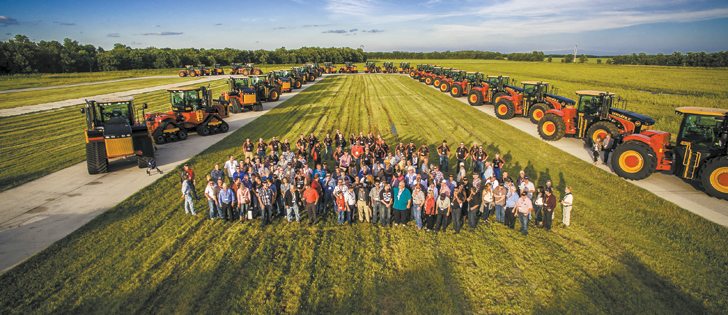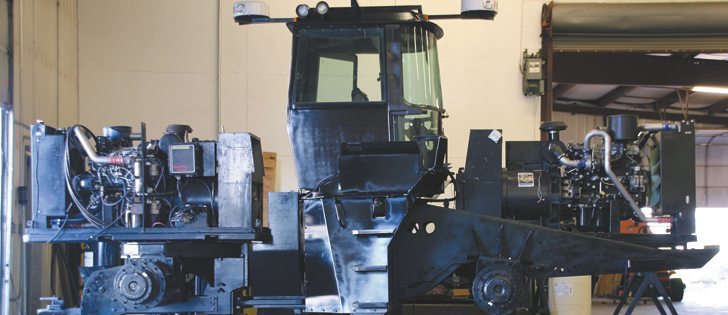Losing GPS during a critical field operation isn’t a problem if the system simultaneously receives signals from 75 satellites representing half a dozen providers.
Science fiction? No. It’s available to Canadian farmers now.
That level of reliability is exactly what farmers can expect from GPS if their next tractor is a Fendt 700 series, says Ross Tufford, owner of AgWest, the Agco dealership in Portage la Prairie, Man.
“They call it integrated satellite-assisted steering guidance, and it’s pretty advanced. It reads signals from the entire global navigation system,” Tufford said.
Read Also

Growing garlic by the thousands in Manitoba
Grower holds a planting party day every fall as a crowd gathers to help put 28,000 plants, and sometimes more, into theground
“It can access every GPS provider, including the European Galileo, the Russian Federation GLONASS (Globalnaya Navigatsionnaya Sputnikovaya Sistema), GNSS and WAAS. And it can read them all at the same time, up to a limit of 75 satellites. I’d say your odds of signal interruption are just about zero. It’s more accurate and more reliable than anything else.”
The 700 series is a new, ground-up design that packs all the latest guidance and control technology into one tractor. Designed mainly for row crop and haying operations, the series’ six models range from 110 power take-off to 195 p.t.o. h.p.
The 720 has 165 p.t.o. h.p. and is the only model that has been shipped to Manitoba.
AgWest has been selling Fendt tractors in central Manitoba since it first arrived in Canada two decades ago. Grain growers often characterize them as high-end specialty tractors, but repeat sales have remained strong at AgWest.
“Our Fendt sales have typically been 60 percent dairy farmers, 25 percent beef and the remaining 15 percent row crop,” said Tufford.
Row crop farmers include vegetable growers who don’t use a lot of acres but are major producers of high-value crops in the Portage area.
Tufford said the row crop sector is expanding around Portage and in other areas further west. He expects more row crop acres in the next few years.
“Corn and soybeans keep expanding into new areas every time we get new varieties that require fewer corn heat units,” he said.
“So there’s more demand for row crop tractors with power and technology for growers who have corn and soybeans. Fendt tractors are now better suited for row crop farming than before. With the 800 and 900 series going up into the 300 h.p. range, we’re starting to see these tractors in areas you would have never imagined.”
The accurate satellite-assisted guidance option that Tufford describes is available on all 700 series tractors coming to North America. However, the multi-satellite factor is only one component of its new high tech steering system, called VarioActive.
Variotronic electronic control brings together all electronic functions in a single terminal. It allows the operator to dictate all tractor and implement controls, camera functions, field documentation and the automatic steering system.
The Varioterminal touch screen displays up to four applications at one time. The documentation feature records all relevant data with minimal attention from the operator. Data can be transferred wirelessly from the tractor to an office computer and from office to tractor.
Another feature called VarioActive lets the operator choose between two steering ratios. The operator uses the normal ratio for straight line field work and transit, which is 26.6 degrees of steering for one full turn of the steering wheel input.
For tight work in row crop headlands and loader work, the operator punches in the quick steer gear ratio so the tractor steers 43.3 degrees with one turn of steering wheel input.
A fail safe device prevents the quick ratio from being used at transit speeds.
The Fendt Stability Control, another new feature in steering and transit, automatically unlocks the locked differentials at speeds above 12.5 m.p.h. and uses the axles to dampen side-to-side movement.
When tractor speed drops back below 12.5 m.p.h., the system automatically locks the differentials again for maximum ground traction from the tires.
Fendt says its new front axle can handle 25,000 pounds while turning at a 52 degree angle.
The ballast system is designed for easy movement of the weights. It quickly changes between 60:40 front-rear to 40:60 front-rear or any combination between. Rear weights can be integrated into the wheels without increasing overall width.
European manufacturers know customers use their tractors for more than pulling power. The tractor is the ultimate multi-tasking machine on European farms.
With that in mind, Fendt equips all new 700 series tractors with 22 ancillary implement connections as standard equipment, including those destined for North America.
There are six double-acting hydraulic valves at the rear and two at the front. The factory installs front and rear three-point hitches and full ISOBUS connection. Rear lift capacity is 21,120 lb.
Fendt has 110/220 volt AC electrical generation and connections on the European versions because electrically powered implements are becoming more common there.
“It’s offered in Europe, but not here yet,” says Tufford.
All six of the 700 series tractors are powered by Deutz six litre, six cylinder turbocharged diesel engines. All tractors put the power through the step-less Vario CVT transmission.
Fendt engineers operate on the premise that a heavy tractor is not needed to deal with a heavy load if they do their homework well.
Maximum unladen weight of a 700 series tractor is 17,416 lb., but the tractor is capable of handling 39,600 lb. gross weight.
Fendt says this is possible because the engineers focus their attention on transferring the optimal horsepower to the ground.
This attention to power transfer also means better fuel economy. Fendt says the 700 series tractors burn an average of 5.3 gallons diesel per hour in normal operating conditions.
For further information, contact Tufford at 204-857-5130 or visit www.fendt.com.

















